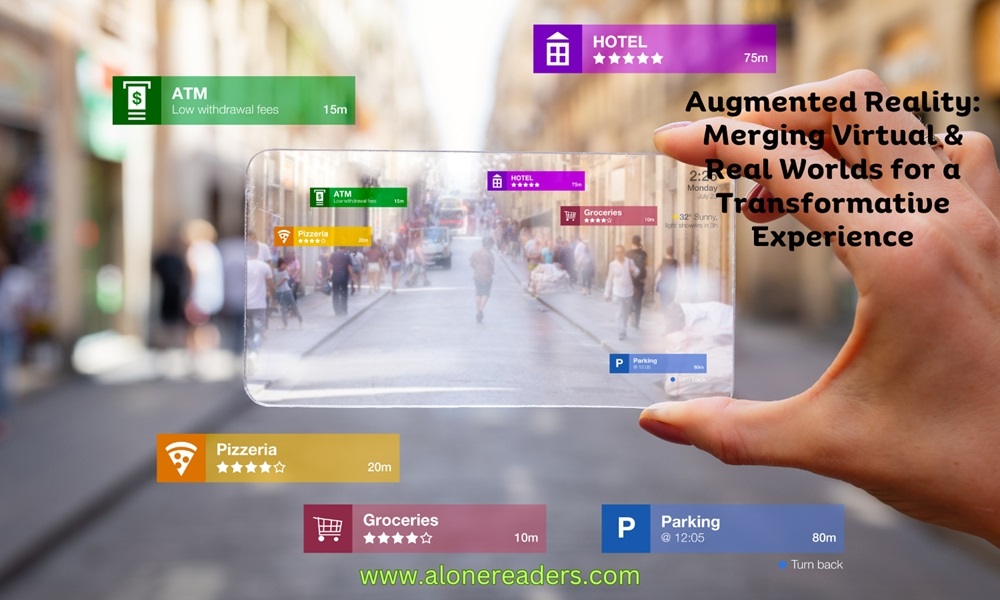
Augmented Reality (AR) stands at the forefront of technological innovation, seamlessly merging the digital and the real, transforming our perception of the world around us. Unlike virtual reality, which creates a wholly artificial environment, AR enhances the real world by superimposing computer-generated information on our view of our surroundings. This integration of digital information with the user's environment in real time not only blurs the lines between the real and the digital but also creates a symbiotic relationship where each enhances the other, leading to a more enriched, interactive experience.
The potential of AR technology extends across various sectors, from enhancing day-to-day experiences to revolutionizing professional fields. In the realm of consumer applications, AR has already made significant inroads. For example, retail and fashion industries use AR to offer virtual try-on solutions, enabling customers to visualize products like clothes or glasses in real-time, superimposed on their images. This not only elevates the shopping experience but also assists in making more informed purchasing decisions.
Education and training represent another domain where AR is making a substantial impact. By overlaying digital information onto physical objects and environments, AR provides a more interactive and engaging learning experience. Imagine biology students observing a 3D model of a human heart hovering above their textbooks or mechanics visualizing the inner workings of a vehicle's engine without dismantling it. This dynamic form of education can lead to a deeper understanding and retention of information.
The healthcare industry is also embracing AR to enhance both patient care and medical training. Surgeons use AR to project digital images onto physical organs during operations, providing real-time, valuable information without the need to look away from the patient. Medical training through AR enables aspiring doctors to practice procedures in a simulated environment, preparing them for real-life surgeries.
In terms of home entertainment and social interaction, AR is changing the game. Augmented reality games, such as the famous "Pokémon GO," encourage users to explore real-world locations while interacting with digital elements. This blend not only brings a novel twist to gaming but also promotes physical activity and social interaction.
The impact of AR on the automotive industry is equally transformative. Heads-up displays (HUDs) project vital information, such as speed and navigation directions, onto the windshield, allowing drivers to keep their eyes on the road while staying informed. This integration enhances safety and adds a new dimension to the driving experience.
In the field of tourism and exploration, AR can bring historical sites and museums to life. Visitors can view historical figures or events unfolding right before their eyes, adding an educational and immersive layer to their experience. This not only enriches the visit but also makes learning more engaging and interactive.
Even everyday tasks like navigation are being transformed by AR. Instead of looking at a 2D map on a phone screen, users can see directions projected onto the real world, making navigation more intuitive and seamless. This technology not only simplifies the process but also makes it safer, especially for pedestrians and cyclists.
For interior design and architecture, AR enables clients to visualize changes in their living spaces or future projects in real-time, overlaying proposed designs onto their current spaces. This capability aids in better decision-making and allows for customization before any physical work begins.
Furthermore, AR is playing a significant role in enhancing accessibility for individuals with disabilities. For instance, AR applications can aid visually impaired individuals by overlaying enhanced, high-contrast images of their surroundings or providing real-time audio descriptions of their environment.
The integration of AR with social media platforms is also noteworthy. AR filters, which can alter or enhance a user's appearance and surroundings in real-time, have become incredibly popular, changing the way we interact and present ourselves online.
However, with these advancements come challenges and concerns, particularly regarding privacy and data security. As AR technologies collect and process vast amounts of personal and environmental data, ensuring this information's security and users' privacy is paramount. Moreover, there's a need for standardization and regulation in the AR space to ensure these technologies are used ethically and responsibly.
In conclusion, Augmented Reality is rapidly blurring the lines between the digital and the real, offering transformative experiences across various aspects of life and work. From enhancing daily tasks to revolutionizing professional fields, AR holds the promise of a more interactive, informative, and immersive future. As this technology continues to evolve, it will undoubtedly unlock new potentials, reshape our interactions with the digital world, and provide solutions to some of the most complex challenges we face today.